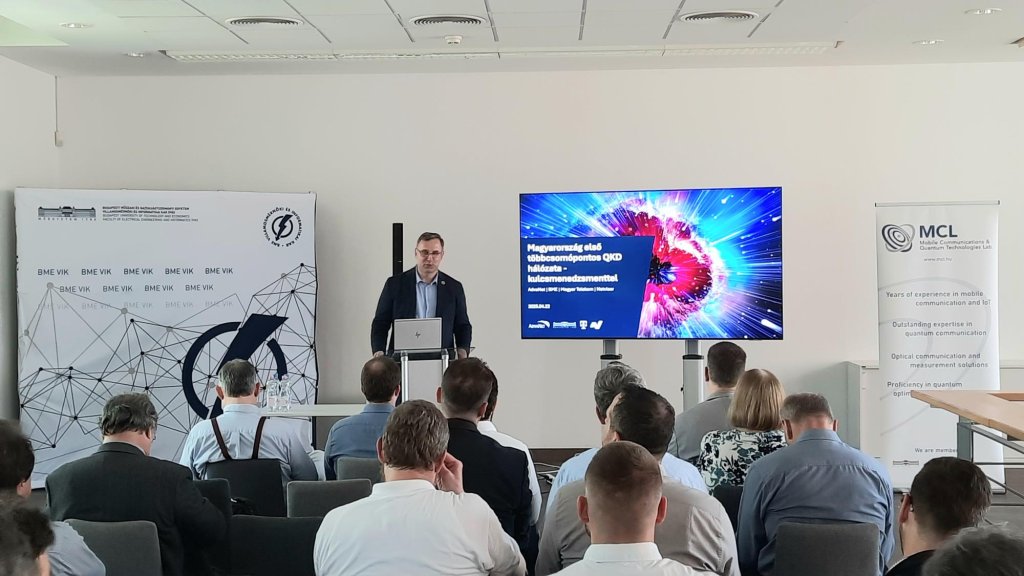News feed
Quantum-Based Encryption Network Successfully Tested at BME
2025. 04. 28.
The demonstration, carried out through a unique research–industry collaboration, was the first of its kind in Hungary and marks a significant milestone in cybersecurity development.
Quantum-based solutions may provide protection against information security vulnerabilities, intercepted communications, and the threat of data theft. Building such solutions requires the development of quantum key distribution (QKD) networks, and this has now been successfully demonstrated for the first time in Hungary, thanks to a unique collaboration between researchers and industry professionals. Experts from AdvaNet Magyarország Kft., Budapest University of Technology and Economics (BME), Magyar Telekom Nyrt., and Netvisor Zrt. jointly developed the country’s first multi-node quantum key distribution test network, complete with key management functionality.
As quantum computing continues to evolve rapidly, it fundamentally challenges the long-term security of current encryption systems, making timely preparation essential. QKD is one of the most promising responses to this challenge, as it offers physically guaranteed security during the transmission of encryption keys.
The construction of Hungary’s first multi-node QKD network represents a technological milestone in the field of cybersecurity.
On 22 April, representatives of the participating organisations presented the background of the successful demonstration at the Faculty of Electrical Engineering and Informatics (VIK) of BME. This was followed by a live demonstration of the local node of the functioning network at BME’s quantum communication laboratory.
“In recent years, Hungary has achieved a number of advances in the field of quantum communication, and the number of such experiments is steadily growing. It is a major step forward that we have now succeeded in building Hungary’s first multi-node quantum-based encryption network using commercially available devices,” said Sándor Imre, Dean of the Faculty of Electrical Engineering and Informatics (VIK).

Sándor Imre
The three nodes of the network are located at the quantum communication laboratory in BME’s Building I, in Kelenföld, and in Székesfehérvár. The system is built on three layers. On the bottom layer, Toshiba quantum key distribution devices share a key each along the BME–Kelenföld and Kelenföld–Székesfehérvár links. The middle layer comprises servers responsible for key management, enabling encrypted communication between the two outer nodes. On the top layer, a classical WDM (wavelength-division multiplexing) telecommunications device is installed at Székesfehérvár and another at the BME lab, each using the keys received from their respective QKD servers to encrypt communication between the two locations.
This is the first time in Hungary that quantum key distribution—previously used mainly as a point-to-point solution—has been tested as a multi-node network. The demonstration offered practical experience of the key management functions required for a full-scale QKD network, and also allowed the project team to gain insights into operating the devices and integrating the keys generated through quantum communication with traditional encryption tools. Since quantum communication—based on approximately one photon per bit—has a relatively short range, linking the system into a network with robust key management helps overcome this limitation.
Rector's Office, Department of Communications
